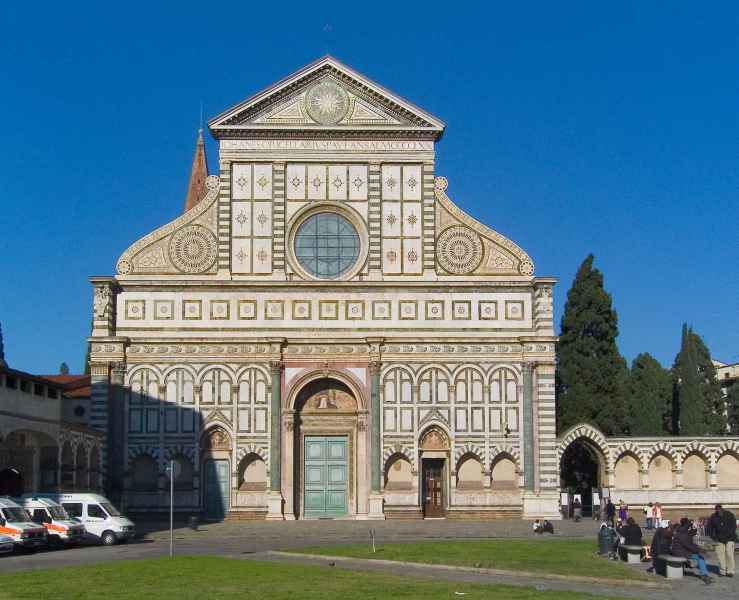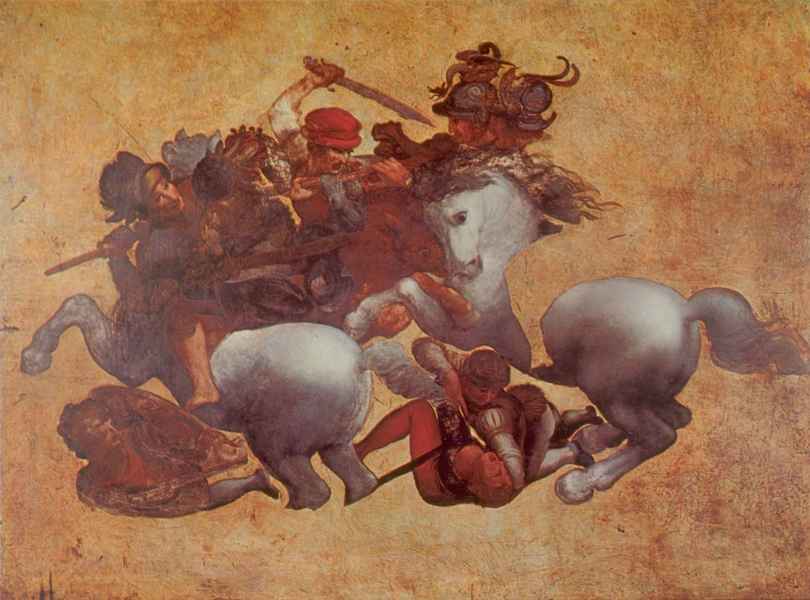When the Signoria commissioned Leonardo to paint the Battle of Anghiari, on October 24, 1503, he was given the keys to the Pope's Room in Santa Maria Novella, where he was to make the preparatory cartoon for the great wall painting that was to adorn the east wall of the Great Hall in Palazzo Vecchio, over a space 18.8 wide and 8 meters high.
In February 1504, payments are recorded for «building the scaffolding for said cartoon» and for many other preliminary jobs and expenses.
The cartoon was then brought to Palazzo Vecchio, where it was used for transferring the composition of the Battle of Anghiari onto the wall. In the great hall, facing Michelangelo's cartoon for the Battle of Cascina, it constituted that marvel hailed by Benvenuto Cellini as the "School of the world" for the influence it exerted on the artists who saw it. Although no one yet knows where it is, it is hard to believe that it has been lost.
Santa Maria Novella undoubtedly represented for Leonardo a fundamental lesson in the various artistic expressions of the Early Renaissance, with Alberti's façade (commissioned by the Rucellai family), the Gondi chapel (designed by Sangallo, with a Crucifix by Brunelleschi), the Tornabuoni chapel (with Ghirlandaio's frescoes), Giotto's Crucifix in the sacristy, Masaccio's Trinity (fundamental also as regards the concept of perspective), Brunelleschi's pulpit, the Rucellai chapel (with Cimabue's Madonna Enthroned, later moved to the Uffizi), the Green Cloister with the frescoes of Paolo Uccello (including the extraordinary Deluge), and the Spanish Chapel (frescoed by Andrea di Bonaiuto).

Basilica of Santa Maria Novella
Texts by
Alessandro Vezzosi, in collaboration with Agnese Sabato / English translation by Catherine Frost
Related resources
Gallery
Related resources
Gallery






